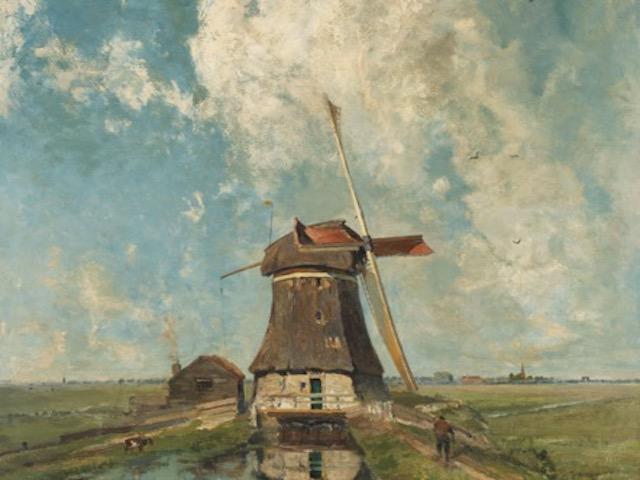A Windmill on a Polder Waterway

Our country is indeed a vibrant and captivating place, as Constant Gabriël beautifully expressed in his letter. In his painting "A Windmill on a Polder Waterway" from 1889, also known as "In the Month of July", Gabriël captures the essence of a Dutch summer day with exquisite detail. The scene depicts a picturesque windmill standing proudly on the edge of a polder canal, surrounded by lush greenery and the tranquil waters reflecting its image. The artist's choice of light colors brings a sense of warmth and serenity to the composition, a departure from the typical gray tones of his contemporaries in the Hague School.
The term "polder" refers to reclaimed land from the sea, drained and cultivated for agricultural purposes. This unique landscape feature is a defining characteristic of the Dutch countryside, and Gabriël masterfully incorporates it into his painting. The windmill, a symbol of Dutch heritage and innovation, stands as a testament to the country's rich history of water management and engineering. The figure walking towards the mill and the quaint house on the left add a sense of human presence to the otherwise idyllic scene, inviting viewers to imagine themselves strolling along the waterway on a sunny summer day.
Gabriël's keen observation of the Dutch landscape is evident in the meticulous details of the painting, from the reflection of the mill in the water to the play of light and shadow on the surrounding vegetation. His ability to capture the essence of a summer day in the Netherlands is a testament to his skill as an artist and his deep connection to his homeland. "A Windmill on a Polder Waterway" serves as a timeless reminder of the beauty and tranquility that can be found in the Dutch countryside, inviting viewers to immerse themselves in the sights and sounds of a summer day in the heart of Holland.
© ChatGPT 3.5